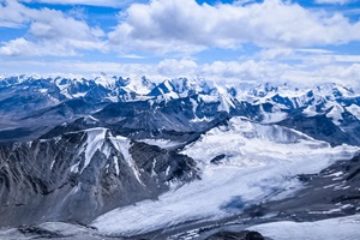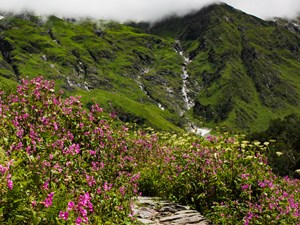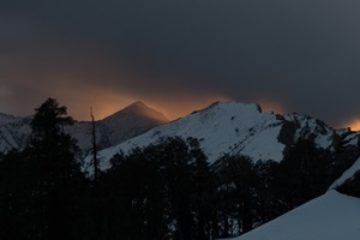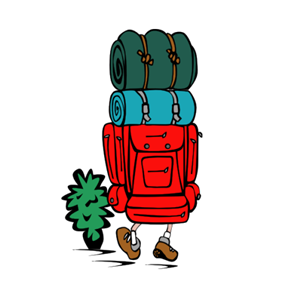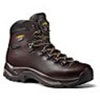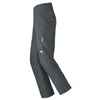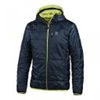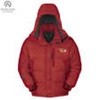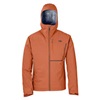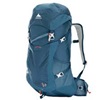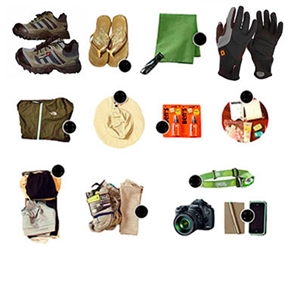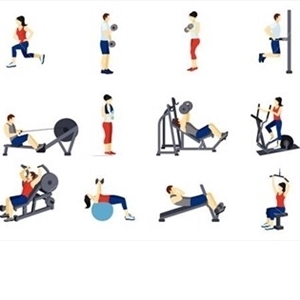Packing your rucksack/backpack carefully for a trekking trip is simple but give due priority. On the Himalayas it is mandatory that a backpacker/trekker must have essential and mandatory items, yet light enough to move comfortably.
The treks on the different parts on the Himalayas stretch from short and medium to extended long duration. Shorter duration trek backpacking is easier but medium to long duration are need to be packed carefully. Higher the duration of the trek, higher the importance.
For serious trekkers, there is no way other than to pack his/her Rucksack with attention to ensure own safety. The catch is to pack light with all the necessary and safety items with you.
Every gram on the mountain matters. Quality light weight products are often expensive. These are designed to meet standards on harsh climate. I would personally assert to acquire/buy such clothing/equipment one by one, if not all together.
Following items are absolutely mandatory for any trekking trip.
1) A Rucksack
2) A trekking shoe
3) Warm Jacket
4) A Windproof
5) Sleeping Bag
On how to select the items read:
https://dev.himalayatrekker.com/trek-essentials/selection-of-equipment
Here I would focus on how to pack everything in one single Rucksack/Backpack with high safety. There are treks where one gets an option to offload some weight, leaving a luggage at the base camp. While returning you can pick the left luggage. In certain popular and safer routes trekker has the opportunity to offload the Rucksack on a mule or even to a porter. But crossing a pass or most of the longer duration trek will require packing everything in one Rucksack and carry it all through. A medium duration trek can involve 4-7 trekking days and longer duration ranges between 8 to 12 trekking days.
A mid to long duration trekking Rucksack should weigh between 8 to 12 Kg. Trekkers should grow the habit to carry it comfortably. This is to ensure higher safety of the trekkers as well as leaving lesser footprint and thus sustainable.
I have seen various articles on internet about what are the things to carry in a trek. The extended generic list of article amazes me every time. The paraphernalia goes on and on. To follow, one has to carry a rucksack sometimes touching almost 20 Kg!
Essentially a trekking Rucksack/Backpack on the Himalayas will contain:
- Clothing
- Windproof/Waterproof/Rain gear
- Sleeping Bag
- Accessories
- First-Aid/Medical Kit
- Dry food items to sustain a day in emergency condition
For his/her own safety a trekker should always carry the following items in rucksack on a Difficult/Hard grade trek.
- Warm jacket
- Windproof plus waterproof gear
- Sleeping bag along with carry mattress
- Emergency dry food items
Rucksack: The first step is to select a proper Rucksack as per your requirements. Often we buy unutilised bigger or too small a backpack. Keeping in mind the medium to long duration treks, it is sufficient to use a Rucksack/Backpack between 45 to 50 Litre. A 50 L one has enough space inside to pack everything including your sleeping bag for a trek up to 2 weeks. One such bag should weigh within 1.5 Kg.
Clothing: Always use synthetic quick dry t-shirts. Cotton tees are heavy and take time to get dried. 4/5 t-shirts are good enough for a home to home round trip. For lower use again the synthetic light weight/quick dry trousers. 2/3 such trousers are good. Don’t use comfortable jeans unless there is an option to leave luggage at base camp. A Cargo/Six-pocket can be used instead. Together upper and lower wear should not weigh more than 2 Kg.
Innerwear, socks, cap, balaclava, gloves are lighter items and should be within 500g.
For a high altitude trek an upper thermal base layer (Woolycot) is essential. The lower one is optional. Normally protection is vital for upper portion of the body. Adds another 500g to your back.
Warm jackets are of different types and varying weight. Normally a Fleece/Synthetic Fill/Down jacket is light and provides adequate warmth. The weight should be within a Kilogram for such a jacket.
A windproof upper with hood is also a must item. Normally these will have water repellent property. A typical Raincoat/Poncho is not recommended as these are heavy and not breathable, unless you are trekking in monsoon.
Sleeping Bag: For a Himalayan trek Sleeping bags are rated for a temperature ranging between -10° C to 0° C. For colder temperatures you can use one additional base layer while sleeping. Synthetic bags weigh up to 2 Kg whereas a Down feather filled sleeping bag is much lighter.
Accessories: You have to be careful to select what to take and what to discard. My approach is being minimalist to choose from a wide range of items. A tooth paste (Small tube of Rs 10), toothbrush, tissue roll, a Boroline/chap stick, a scissor, (or a light weight multi tool), a torch, soap strip and a small container of cold cream are good for the purpose. Maybe a small deo-spray on top of these. Don’t carry a shaving or a beautifying kit 🙂 . Together these should not weigh more than 500 g.
First-Aid cum Medical Kit: A crepe bandage, cotton, Dettol/Savlon, antiseptic creme, a medicine course for each including headache, vomiting, anti-inflammatory, pain killer, and stomach upset. Volini spray. Together all these weigh again maximum of 500 g.
Keep some dry instant edible food items for emergency. A pack of candy, few chocolate bars/energy bars, dry fruit mix and a small pack of Glucon C/D/Gatorade. Another 500 g.
Wait, we are not done yet! A bottle of water is must. Ask the guide clearly whether you will be able to refill the bottle on the trail. For a long trekking day and scarce water, you may need to carry 1.5 L of water. Weighs additional 1.5 Kg.
Adding up the items, total weight remains not more than 10 Kg (including the sleeping bag and the Rucksack itself)
An example: Let me give the details of my packed Rucksack for an idea and let us measure the weight.
Rucksack: Camp M4 – 40L – 1 Kg
T-Shirts, trek pants, innerwear, socks, caps, gloves etc.: ~ 2 Kg
Warm Jacket: Mountain Hardware Windstopper Tech Fleece ~ 650g
Windproof/Waterproof: Marmot Precip Jacket ~ 370 g
Sleeping Bag: Mountain Hardware Ultralamina 15° F/-9° C ~ 1.3 Kg
Accessories and Medical Kit: ~ 1 Kg
Water: Hydration pack of 1L ~ 1 Kg
Miscellaneous: Notebook, pen, GPS, Binocular etc ~ 1 Kg
Camera: Panasonic Lumix DMC FZ200 with additional batteries ~ 1 Kg
Now you believe that I am able to pack everything within 10 Kg 🙂 .
Order of packing different items is important once you know what to pack,. Things you may need while walking should be kept on top. Sleeping bag should go in the bottom, as you don’t need it before campsite. This gives stability to the Rucksack. A well packed Rucksack would stand straight on the ground without a support. Pack similar items together. Its easier to carry a backpack when the load is evenly distributed.
Occasional rain or drizzle is common on mountain. Use a waterproof Rucksack cover/Rain fly. Your warm jacket and sleeping bag must not get wet in any condition during a trek. For double protection use a polythene inner liner sheet. Even if your pack is wet outside, the inner liner will keep your items dry and toasty.
I hope that now you are confident about what and how to pack for a trekking trip to the Himalayas.
To finish, I would say that backpacking is an art and pack rationally!
Happy packing ![]()


